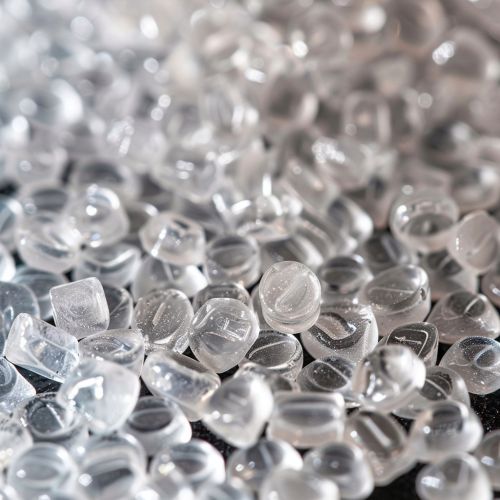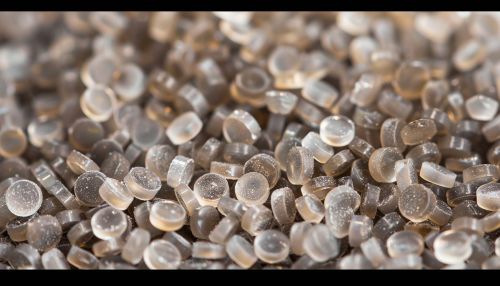Primary microplastics
Introduction
Primary microplastics are small plastic particles that are directly released into the environment in a size of less than 5mm. They are a significant source of marine pollution and pose a threat to marine ecosystems and human health. These particles are either manufactured to be small (microbeads in personal care products) or are produced for specific industrial applications (pre-production plastic pellets, or "nurdles").
Origin and Types
Primary microplastics are intentionally produced at a small size for certain applications. They can be categorized into two main types: microbeads and nurdles.
Microbeads
Microbeads are tiny plastic particles usually smaller than two millimeters. They are widely used in cosmetics, personal care products, and cleaning agents. Microbeads are often made of polyethylene but can be of other petrochemical plastics such as polypropylene and polystyrene.
Nurdles
Nurdles, also known as pre-production plastic pellets, are small plastic pellets that serve as the raw material in the manufacture of plastic products. They are often clear or white but can be dyed any color. Nurdles are a significant source of primary microplastic pollution due to spills during transportation and handling.


Environmental Impact
Primary microplastics are a significant contributor to plastic pollution. They are particularly harmful due to their small size, which allows them to be ingested by a wide range of organisms.
Marine Pollution
Primary microplastics are a significant source of marine pollution. They can be carried by wind and water currents and end up in the world's oceans. Once in the marine environment, they are nearly impossible to remove due to their small size and the vastness of the oceans.
Impact on Marine Life
Primary microplastics pose a threat to marine life. Many marine organisms, from tiny plankton to large mammals, can ingest these particles, leading to physical harm and exposure to toxic chemicals. Ingested microplastics can block digestive tracts, alter feeding behavior, and even lead to death.
Bioaccumulation and Biomagnification
Primary microplastics can absorb and carry pollutants such as polychlorinated biphenyls (PCBs) and heavy metals. When ingested by marine organisms, these pollutants can be released and accumulate in the organism's tissues, a process known as bioaccumulation. Through the food chain, these pollutants can be magnified up the trophic levels, a process known as biomagnification, posing a threat to top predators and potentially to human health.
Human Health Impact
The potential impact of primary microplastics on human health is a growing area of research. Humans can be exposed to microplastics through the consumption of contaminated seafood, drinking water, and even air.
Ingestion
Humans can ingest primary microplastics through the consumption of contaminated seafood. Microplastics ingested by marine organisms can make their way up the food chain and end up in the seafood we consume.
Inhalation
Airborne microplastics can also be inhaled. This is particularly concerning in indoor environments, where microplastics can be released from household products and textiles.
Potential Health Risks
While the health risks associated with microplastic exposure are not yet fully understood, there is concern that microplastics could carry harmful pollutants into the human body. Additionally, the plastic particles themselves may cause physical harm if they accumulate in tissues or organs.
Mitigation and Regulation
Efforts to mitigate the environmental and health impacts of primary microplastics include both regulatory measures and changes in manufacturing practices.
Regulatory Measures
Several countries have implemented or are considering legislation to ban or limit the use of microbeads in personal care products. For example, the United States passed the Microbead-Free Waters Act in 2015, which prohibits the manufacture and introduction into interstate commerce of rinse-off cosmetics containing intentionally-added plastic microbeads.
Changes in Manufacturing Practices
Some companies are voluntarily phasing out the use of microbeads in their products, while others are exploring biodegradable alternatives. However, these alternatives also have potential environmental impacts that need to be considered.
Conclusion
Primary microplastics are a significant source of plastic pollution, posing threats to marine ecosystems and potentially to human health. Efforts to mitigate these impacts include regulatory measures and changes in manufacturing practices, but further research is needed to fully understand the extent of these impacts and how best to address them.
